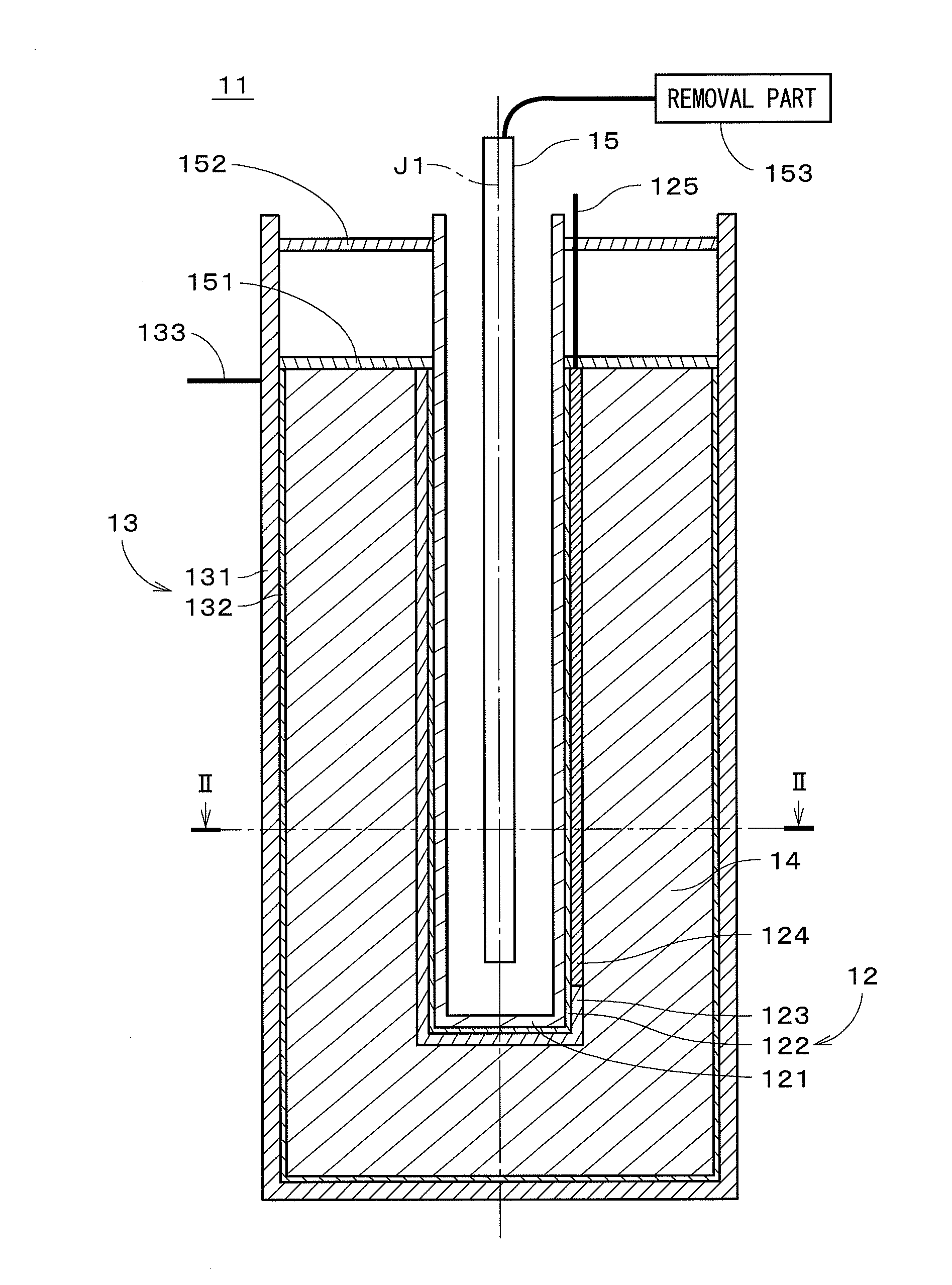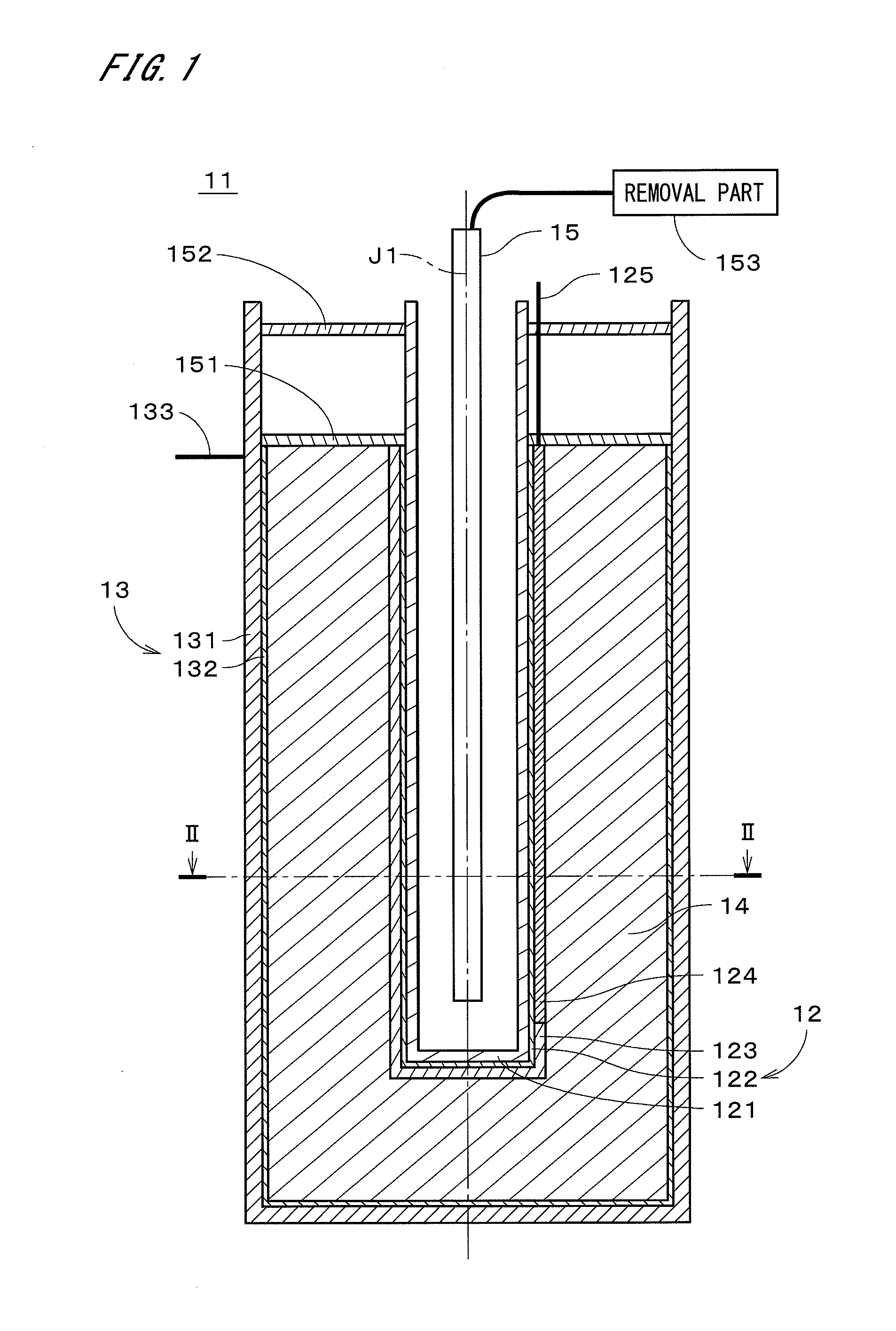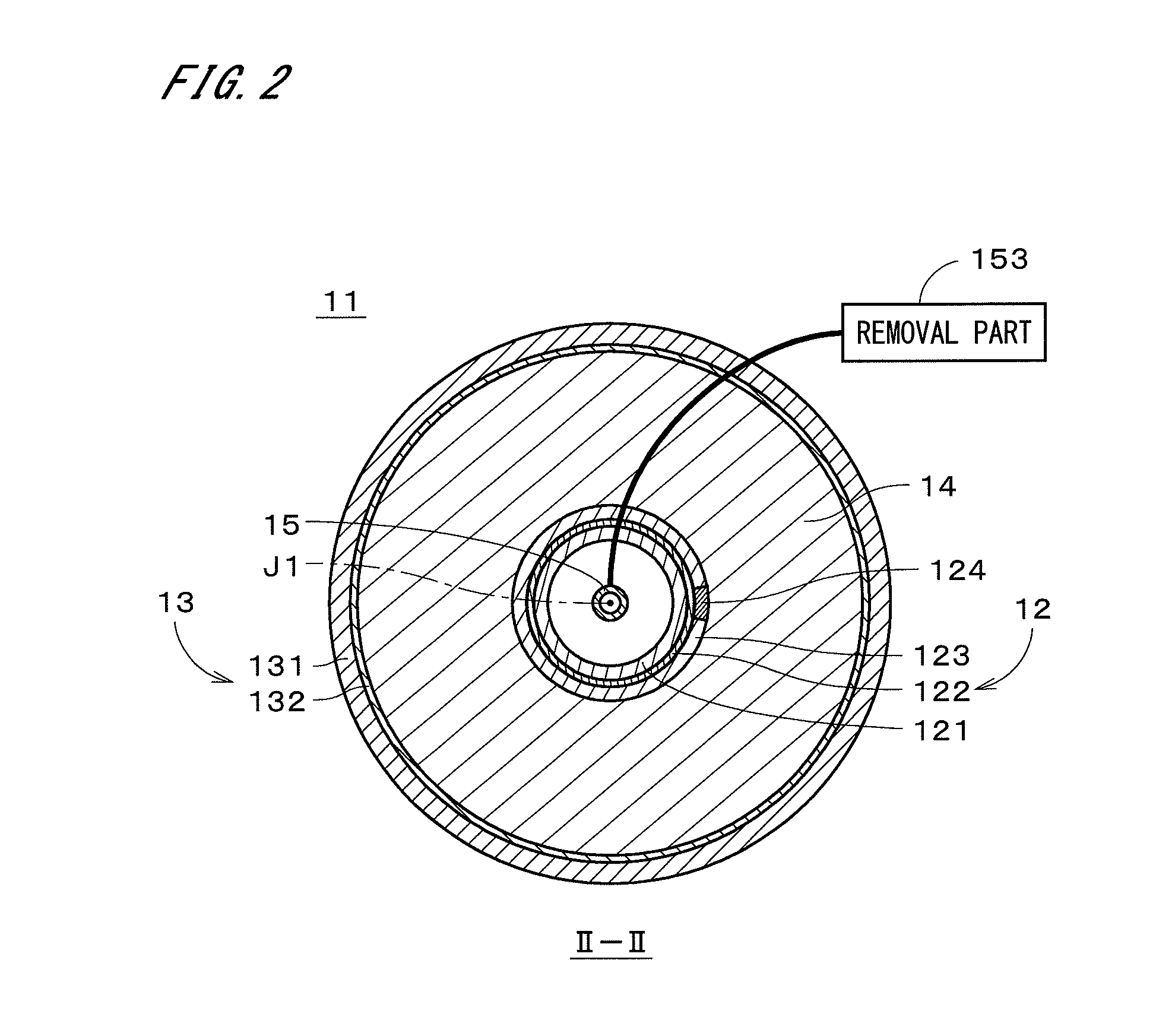Metal-air battery
a metal-air battery and battery technology, applied in the field of metal-air batteries, can solve the problems of metal-air batteries having a risk of short circuit between their positive and negative electrodes, electrolyte solution may permeate through and leak out of the positive electrodes, and achieve the effect of preventing permeation and leakage and preventing the occurrence of short circuits
- Summary
- Abstract
- Description
- Claims
- Application Information
AI Technical Summary
Benefits of technology
Problems solved by technology
Method used
Image
Examples
first embodiment
[0036]FIG. 1 is a longitudinal cross-sectional view of a metal-air battery 11 according to the present invention. The metal-air battery 11 has a substantially cylindrical shape, and a cross section of the metal-air battery 11 including a central axis J1 thereof is shown in FIG. 1. FIG. 2 is a transverse cross-sectional view of the metal-air battery 11 taken along line II-II in FIG. 1. As shown in FIGS. 1 and 2, the metal-air battery 11 is a secondary battery that includes a positive electrode 12, a negative electrode 13, an electrolyte layer 14, and an air introduction pipe 15. The air introduction pipe 15, the positive electrode 12, the electrolyte layer 14, and the negative electrode 13 are concentrically disposed in this order from the central axis J1 toward the outside in the radial direction. In other words, the metal-air battery 11 has a substantially cylindrical shape in which the negative electrode 13 is disposed along its outer periphery and the positive electrode 12 is dis...
second embodiment
[0058]The barrier layer 17a is a porous member formed of ceramics, metals, inorganic materials, organic materials, or the like and holds an electrolyte in its pores, the electrolyte allowing lithium ions to selectively pass therethrough. The formation of the barrier layer 17a is carried out by extrusion molding, CIP and firing, HIP, or the like. Reactions during the charge and discharge of the metal-air battery 11b are the same as those of the metal-air battery 11a according to the
[0059]Since the positive electrode 12 of the metal-air battery 11b contains no carbon as in the first and second embodiments, it is possible to prevent the generation of lithium carbonate on the positive electrode 12 during discharge and to thereby reduce the charge voltage of the metal-air battery 11b. Furthermore, providing the barrier layer 17a between the positive electrode 12 and the negative electrode 13 makes it possible to suppress the growth of dendrites on the negative electrode 13 during charge,...
sixth embodiment
[0072]FIG. 8 is a longitudinal cross-sectional view of a metal-air battery 21 according to the present invention. The metal-air battery 21 has a substantially cylindrical shape, and a cross section of the metal-air battery 21 including a central axis J1 thereof is shown in FIG. 8. FIG. 9 is a transverse cross-sectional view of the metal-air battery 21 taken along line IX-IX in FIG. 8. As shown in FIGS. 8 and 9, the metal-air battery 21 is a secondary battery that includes a positive electrode 22, a negative electrode 23, an electrolyte layer 24, and an air introduction pipe 25. The air introduction pipe 25, the positive electrode 22, the electrolyte layer 24, and the negative electrode 23 are concentrically disposed in this order from the central axis J1 toward the outside in the radial direction. In other words, the metal-air battery 21 has a substantially cylindrical shape in which the negative electrode 23 is disposed along its outer periphery and the positive electrode 22 is dis...
PUM
| Property | Measurement | Unit |
|---|---|---|
| diameter | aaaaa | aaaaa |
| diameter | aaaaa | aaaaa |
| diameter | aaaaa | aaaaa |
Abstract
Description
Claims
Application Information
 Login to View More
Login to View More - R&D
- Intellectual Property
- Life Sciences
- Materials
- Tech Scout
- Unparalleled Data Quality
- Higher Quality Content
- 60% Fewer Hallucinations
Browse by: Latest US Patents, China's latest patents, Technical Efficacy Thesaurus, Application Domain, Technology Topic, Popular Technical Reports.
© 2025 PatSnap. All rights reserved.Legal|Privacy policy|Modern Slavery Act Transparency Statement|Sitemap|About US| Contact US: help@patsnap.com



